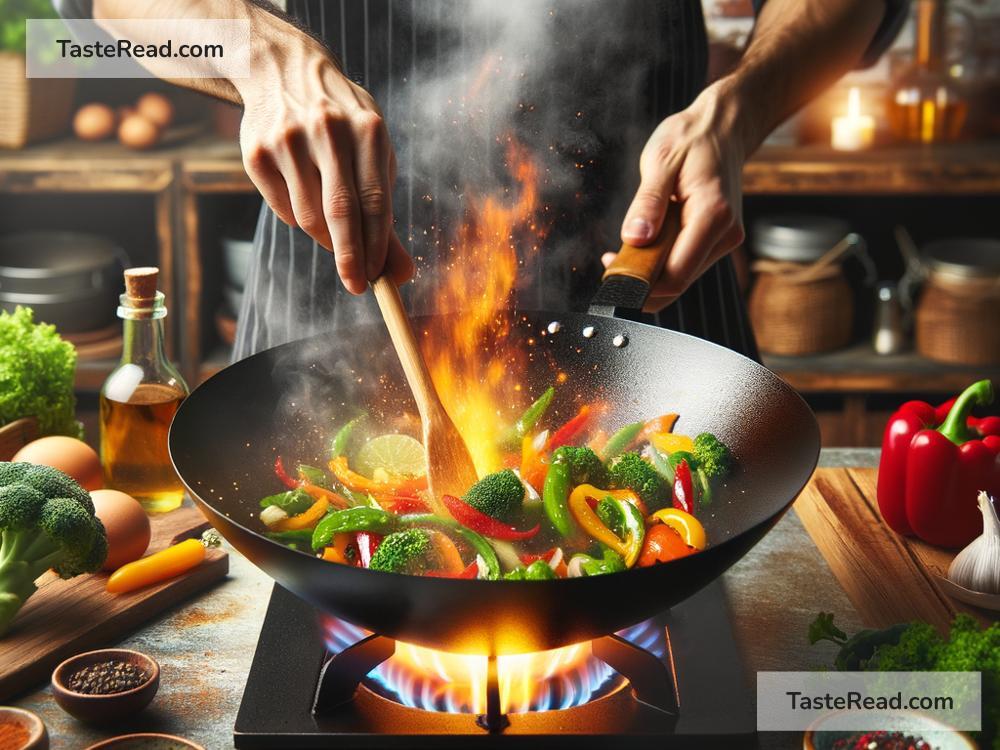The Science of Cooking with Chemical Swiftness: Techniques and Tips
Cooking is not just about following recipes or experimenting with flavors. At its core, cooking is science! Every time you bake a cake, sauté vegetables, or fry an egg, you are sparking chemical reactions that transform raw ingredients into culinary magic. If you’ve ever wondered why food browns or how dough rises, you’re diving into the fascinating world of chemistry in the kitchen.
Let’s explore the science of cooking—particularly the techniques that help speed up these chemical processes—so you can whip up delicious meals faster and more efficiently.
What Is Chemical Swiftness in Cooking?
Chemical swiftness in cooking refers to how quickly chemical reactions take place during the preparation and cooking of food. It involves speeding up processes like caramelization, protein denaturation, and emulsification, all of which are key to creating flavors, textures, and aromas in certain dishes. Understanding these reactions can save you time in the kitchen while ensuring your meals taste incredible.
Think of cooking as a series of tiny experiments. Ingredients interact with heat, moisture, air, and other components, causing physical and chemical changes. When chefs talk about “techniques,” they’re often referring to methods that control or accelerate these reactions.
The Science Behind Common Reactions in Cooking
Before diving into tips, let’s look at some foundational reactions that happen during cooking:
-
Maillard Reaction (Browning)
This chemical reaction happens when proteins and sugars in food are exposed to high temperatures, creating a browned color and delicious savory flavors. It’s what makes toasted bread, grilled meat, and fried onions taste so good. -
Caramelization
This is the process where sugars break down under heat, creating a sweet and nutty flavor. It happens when cooking caramel, roasting sweet vegetables, or browning the top of crème brûlée. -
Protein Denaturation
Heat, acid, or mechanical action can break down the structure of proteins in food. This is why eggs solidify when cooked, meat becomes tender, or yogurt thickens when mixed with acidic lemon juice. -
Leavening (Rising)
In baking, ingredients like baking soda, baking powder, or yeast react to produce gas bubbles, causing dough or batter to rise and become fluffy. -
Emulsification
This reaction happens when ingredients that typically don’t mix—like oil and water—are combined. Emulsifiers (like egg yolks in mayonnaise) hold them together, creating smooth textures.
Techniques to Speed Up Cooking Chemistry
Now that you know the basic reactions, here are some simple techniques to make them happen faster in your kitchen:
1. Cut Ingredients Smaller
Smaller pieces cook faster because heat penetrates them more quickly. For example, diced potatoes will roast in half the time of whole potatoes.
2. Use High Heat for Browning
The Maillard reaction requires heat to work its magic. When grilling meat or caramelizing onions, don’t be afraid to turn up the flame. A hot pan or oven ensures better browning and faster cooking.
3. Don’t Crowd the Pan
Overcrowding your pan reduces the temperature, preventing reactions like browning or caramelization. When sautéing or frying, leave space between pieces to allow heat to do its job effectively.
4. Preheat Everything
Whether it’s your oven, skillet, or grill, preheating gets surfaces hot before food is added. This ensures faster cooking and better chemical reactions.
5. Add Salt to Speed Up Water’s Boiling Point
Adding salt to water slightly raises its boiling point, speeding up the cooking process. Salt also enhances flavors in food!
6. Thin Out Liquids for Faster Reduction
Want your sauce to thicken faster? Spread it thin across a large surface area (like a wide pan) to increase evaporation and speed up reduction.
7. Tenderize Proteins with Acid or Enzymes
Marinades with acidic ingredients like lemon juice, vinegar, or yogurt help denature proteins in meat, making them cook faster and become tender. Pineapple juice and papaya are natural enzyme-rich options for tenderizing.
8. Use Baking Soda for Fast Leavening
Baking soda works quickly in recipes because of its ability to react with acid (like buttermilk or lemon juice) and produce carbon dioxide bubbles. This speeds up rising, so don’t wait long before baking.
9. Cook Under Pressure
Pressure cookers use steam and high pressure to cook food quickly. By raising the boiling point of water, they speed up chemical reactions like softening tough cuts of meat or breaking down starches in beans.
10. Mix Well to Create Emulsions
When combining oil and water to create dressings or sauces, whisk vigorously—or use an immersion blender—to form smooth emulsions.
Tips for Streamlining Cooking Process
Here are some bonus tips to make your cooking not only faster but smarter:
- Prep Ahead: Gather and chop all your ingredients before you start cooking to ensure quick transitions between steps.
- Work in Layers: Add ingredients at the right times to avoid delays or overcooking. For example, add garlic toward the end of a sauté to prevent burning.
- Use Tools and Technology: Appliances like instant pots, food processors, and air fryers can speed up reactions and save you time.
Cooking Faster Doesn’t Mean Sacrificing Flavor
By understanding the science of cooking and using techniques to speed up chemical processes, you can create flavorful dishes without spending hours in the kitchen. Whether you’re browning proteins, caramelizing sugar, or whipping up fluffy baked goods, the key is controlling heat, moisture, and time.
Cooking with chemical swiftness is not only practical but also fascinating—it’s science you can taste! So, the next time you’re in the kitchen, remember that every flick of your spoon and every flame on your stovetop is sparking a tiny chemical transformation. Happy cooking!


